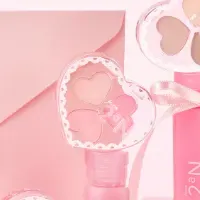
Tooth Fairy Sticks to a Budget: Trends in Tooth Value Revealed
The Tooth Fairy on a Budget
In an age where even fantasy figures feel the effects of economic trends, the beloved Tooth Fairy has implemented a budget. According to the latest findings from the Delta Dental 2025 Original Tooth Fairy Poll®, the average amount left for a lost tooth has dropped significantly for two consecutive years. Specifically, this year’s poll reveals a 14% decrease, with the value per tooth falling to $5.01 from last year's $5.84.
Insights from the Poll
Conducted between January 10 and January 23, 2025, the poll surveyed 1,000 parents of children aged between 6 to 12 years. Interestingly, this decline comes despite the Tooth Fairy's historical tendency to increase monetary gifts in line with economic trends. This year's drop marks one of the most notable reductions since the poll began tracking giving habits 27 years ago.
One notable trend is the notable difference in how much parents claim to leave for their child’s first tooth. One-third of surveyed parents indicated that they give more for the first lost tooth, averaging $6.24, down from $7.09 the previous year. This momentous occasion still allows parents to engage in the Tooth Fairy tradition while reflecting upon fiscal realities.
The Importance of Financial Lessons
Interestingly, nearly 19% of parents believe that the Tooth Fairy serves an educational purpose by teaching their children about the value of money. As children navigate these whimsical exchanges, they inadvertently learn important financial lessons.
Gabriella Ferroni, Senior Director of Strategic Communications at Delta Dental, underscores the significance of these findings. “While it is true that the Tooth Fairy may be moving towards thriftier habits, she continues to be a valuable ally in encouraging children to adopt healthy oral hygiene practices,” she said. This approach illustrates the necessity of balance—enjoying magic while instilling essential life skills.
Regional Variations in Tooth Value
The poll also revealed intriguing regional differences in Tooth Fairy gifts, with the Southern United States now leading the nation at an average of $5.71 per tooth, which is an increase from last year. The Western region follows closely with an average of $5.69 but has experienced a substantial decline of 33% from its previous value of $8.50. Conversely, the Northeast and Midwest regions showed average values of $4.59 and $3.46 respectively, the latter trailing behind the national average.
These variations could reflect differing economic conditions across regions or simply localized practices among parents, drawing attention to how a whimsical tradition adapts to real-world challenges.
The Economic Indicators
It is particularly noteworthy that historical data from the Original Tooth Fairy Poll® typically align with economic indicators such as the Standard & Poor's 500 Index (S&P 500). However, this year, as the S&P 500 enjoyed a significant increase of 26%, the value of lost teeth saw a sharp decline. This divergence could imply a shift in consumer behavior or attitudes towards spending, even among entities as fantastical as the Tooth Fairy.
Finally, while this yearly cost-cutting may seem troubling, since the poll’s inception in 1998, the Tooth Fairy’s monetary gifts have increased by a whopping 285%, from an average of just $1.30 to $5.01. This demonstrates that, over time, even budgetary cuts maintain a sense of increasing value.
Conclusion
As parents navigate the whims of the Tooth Fairy and the financial lessons that come along with them, it’s clear that this charming tradition is evolving. With thoughtful spending at its forefront, the Tooth Fairy remains not only a whimsical childhood figure but also a guide towards important financial literacy. For more insights and information on oral health, the Original Tooth Fairy Poll® stands as a delightful reminder of how even fairy tales adapt to modern society.
Topics Consumer Products & Retail)










【About Using Articles】
You can freely use the title and article content by linking to the page where the article is posted.
※ Images cannot be used.
【About Links】
Links are free to use.